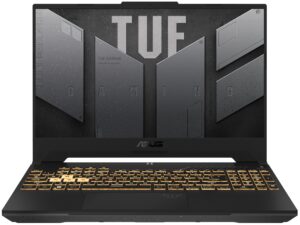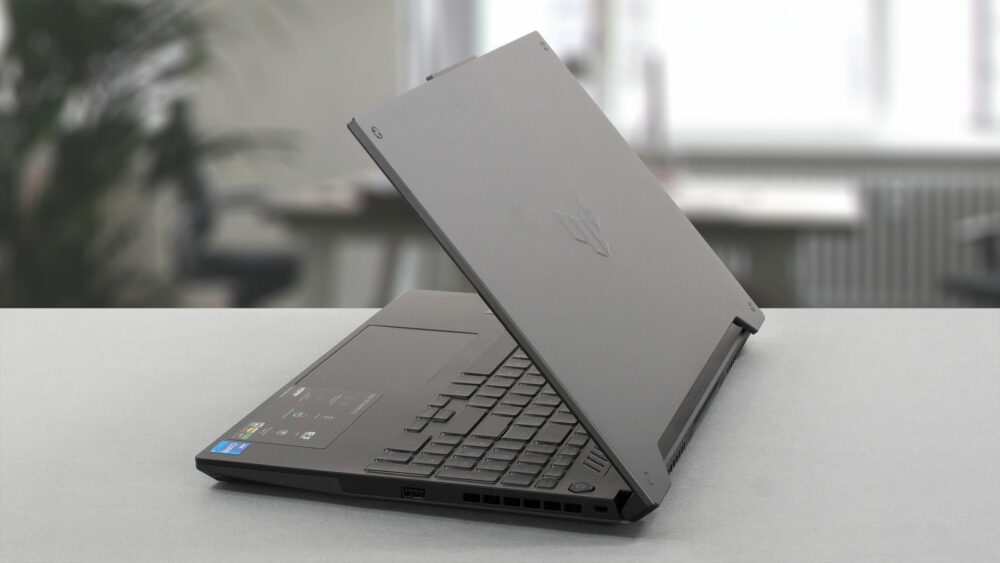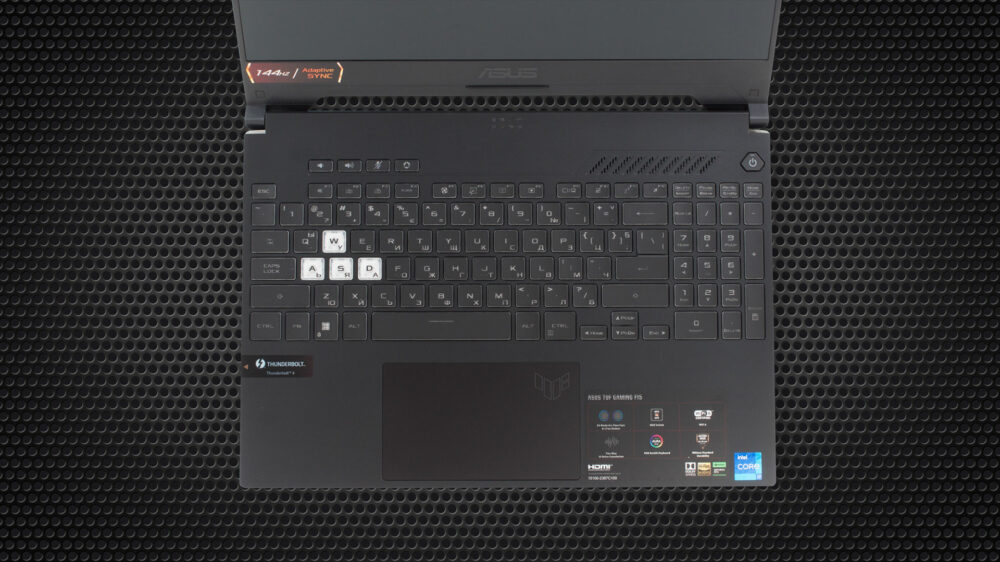ASUS TUF Gaming F15 FX507 – Top 5 Pros and Cons
 The ASUS TUF sub-brand made a huge jump in 2022, now offering some of the best gaming laptops when it comes to price to performance. While our review of the ASUS TUF Gaming F15 FX507 comes a bit late, we’d still recommend the laptop in a heartbeat. It’s got a boatload of performance and amazing cooling that pushes its hardware to the limits. If configured with the right display, it can also serve as a Creator laptop, and while the higher-tiered panels do add up to the price, you’ll get the best of both worlds when it comes to gaming and content creation.
The ASUS TUF sub-brand made a huge jump in 2022, now offering some of the best gaming laptops when it comes to price to performance. While our review of the ASUS TUF Gaming F15 FX507 comes a bit late, we’d still recommend the laptop in a heartbeat. It’s got a boatload of performance and amazing cooling that pushes its hardware to the limits. If configured with the right display, it can also serve as a Creator laptop, and while the higher-tiered panels do add up to the price, you’ll get the best of both worlds when it comes to gaming and content creation.
Today we’re presenting you with LaptopMedia’s top 5 picks about the ASUS TUF Gaming F15 FX507.
ASUS TUF Gaming F15 FX507: Full Specs / In-depth Review
4 reasons to BUY the ASUS TUF Gaming F15 FX507
1. Design and build quality
It would be in poor taste if a laptop called TUF isn’t durable. Thankfully, ASUS was thinking the same thing, equipping the F15 with a durable chassis, despite its more affordable nature. The laptop uses metal for the lid and plastic for everywhere else, but both are rigid and show no major flexing. Also, if you’re a fan of a more minimalist and sleek laptop, the TUF series doesn’t give off a “Gamer” vibe, as there’s no RGB or lighting besides the keyboard and some status LEDs on the base, which is found on all laptops. For a gaming machine, it’s also relatively portable, weighing 2.20 kg and having a profile of 24.9 mm.
2. Upgradeability
Most gaming laptops do come with good upgradeability, and the F15 is part of the club as well, with two SODIMM slots for DDR4 memory. Keep in mind that some units can arrive with DDR5 as well. As of right now, there isn’t a significant difference between the two types, but as DDR5 gets more optimized and used, we’ll start seeing performance improvements as well. For storage, there are two M.2 slots for PCIe Gen 4 storage.
Here’s our teardown video of the TUF Gaming F15, which shows how to access both the RAM and SSD slots.
3. Input devices
The laptop overall is very comfortable to use, mainly due to its keyboard and touchpad. The former’s got tactile feedback and good key travel, as well as a single-zone RGB backlight, meaning one color at a time. The arrow keys do seem a bit small, but the WASD keys are transparent, which looks quite good once they’re illuminated. The touchpad is very big and has a small TUF logo in the upper right corner. The plastic cover is smooth, while the pad itself is responsive and accurate.
4. I/O
The port selection of the laptop is pretty great as well. There isn’t an SD card reader, which will affect photographers, however, the rest is good. There are two USB Type-A 3.2 (Gen. 1) ports, one USB Type-C 3.2 (Gen. 2) port, one Thunderbolt 4 port, an HDMI 2.0b connector, a LAN port, the power plug, and an audio jack.
1 reason NOT to buy the ASUS TUF Gaming F15 FX507
1. CPU behavior
For starters, we want to add that the Core i7-12700H is a very powerful CPU, so seeing these scores in benchmarks and stress tests signifies that there’s some issue with the drivers and software that control the power management. Starting with the performance, as you can see, the TUF F15 is significantly behind the Dell G15 5520 in 3D Rendering, which shouldn’t happen, considering the cooling capacity of the ASUS laptop.
Results are from the Cinebench R23 CPU test (the higher the score, the better)
Results are from our Photoshop benchmark test (the lower the score, the better)
Once we look at the stress test, we can see why the benchmarks are the way they are. For starters, in short and medium loads of around 30 seconds to a minute, the chip does well, going as high as 99W and maintaining good speeds. However, the long load performance of the CPU is nowhere close to where it should be. The clock speeds are low and the chip runs at 45W. If the nameplates were off, we would honestly assume that this is some thin and light 14-inch notebook.
| Intel Core i7-12700H (45W TDP) | 0:02 – 0:10 sec | 0:15 – 0:30 sec | 10:00 – 15:00 min |
|---|---|---|---|
| ASUS TUF Gaming F15 FX507 | 3.28 GHz @ 2.64 GHz @ 69°C @ 99W | 3.48 GHz @ 2.67 GHz @ 82°C @ 98W | 2.28 GHz @ 1.82 GHz @ 61°C @ 45W |














